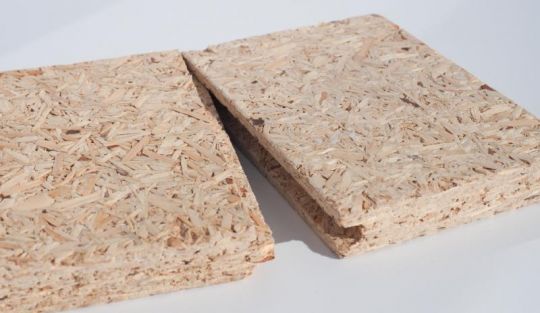Low Formaldehyde Emission OSB: A Comprehensive Guide
Low Formaldehyde Emission OSB, In recent years, the construction and furniture industries have seen a significant shift towards more sustainable and health-conscious materials. One such material that has gained popularity is Low Formaldehyde Emission Oriented Strand Board (OSB). This article delves into the intricacies of low formaldehyde emission OSB, its benefits, applications, and why it is becoming the material of choice for environmentally conscious builders and homeowners.
Table of Contents
- What is OSB?
- Understanding Formaldehyde Emissions
- What is Low Formaldehyde Emission OSB?
- Benefits of Low Formaldehyde Emission OSB
- Applications of Low Formaldehyde Emission OSB
- How is Low Formaldehyde Emission OSB Made?
- Comparing Low Formaldehyde Emission OSB with Other Materials
- Environmental Impact and Sustainability
- FAQs About Low Formaldehyde Emission OSB
- Conclusion
1. What is OSB?
Oriented Strand Board (OSB) is a type of engineered wood product that is made by compressing layers of wood strands with adhesives. It is widely used in construction for sheathing, flooring, and roofing due to its strength, durability, and cost-effectiveness. OSB is known for its versatility and ability to replace traditional plywood in many applications.
2. Understanding Formaldehyde Emissions
Formaldehyde is a colorless, strong-smelling gas commonly used in the production of adhesives and resins. While it is effective in binding wood particles together, formaldehyde emissions can pose health risks, including respiratory issues and allergic reactions, especially in poorly ventilated spaces.
Regulatory bodies like the California Air Resources Board (CARB) and the Environmental Protection Agency (EPA) have set strict limits on formaldehyde emissions from wood products. This has led to the development of low formaldehyde emission OSB, which minimizes these risks.
3. What is Low Formaldehyde Emission OSB?
Low formaldehyde emission OSB is a specialized type of OSB that uses adhesives with reduced formaldehyde content. These adhesives are often made with alternative resins, such as polymeric methylene diphenyl diisocyanate (pMDI), which emit significantly lower levels of formaldehyde compared to traditional urea-formaldehyde resins.
This type of OSB is designed to meet stringent emission standards, making it safer for indoor use and more environmentally friendly.
4. Benefits of Low Formaldehyde Emission OSB
a. Improved Indoor Air Quality
Low formaldehyde emission OSB contributes to healthier indoor air quality by reducing the release of harmful gases. This is particularly important for homes, schools, and offices where people spend a significant amount of time.
b. Compliance with Regulations
Using low formaldehyde emission OSB ensures compliance with strict environmental and health regulations, such as CARB Phase 2 and EPA TSCA Title VI.
c. Sustainability
Many low formaldehyde emission OSB products are made from sustainably sourced wood and eco-friendly adhesives, making them a greener choice for construction.
d. Durability and Performance
Despite the reduced formaldehyde content, low formaldehyde emission OSB retains the strength, durability, and versatility of traditional OSB.
5. Applications of Low Formaldehyde Emission OSB
Low formaldehyde emission OSB is suitable for a wide range of applications, including:
- Residential Construction: Used for wall sheathing, subflooring, and roofing.
- Furniture Manufacturing: Ideal for making cabinets, shelves, and other indoor furniture.
- Commercial Buildings: Used in offices, schools, and hospitals where air quality is a priority.
- DIY Projects: A safe and reliable material for home improvement projects.
6. How is Low Formaldehyde Emission OSB Made?
The production process of low formaldehyde emission OSB involves the following steps:
- Wood Selection: Sustainably sourced wood strands are selected and dried.
- Adhesive Application: Low formaldehyde adhesives, such as pMDI, are applied to the wood strands.
- Layering: The strands are layered in a cross-oriented pattern to enhance strength.
- Pressing: The layers are compressed under high heat and pressure to form a solid board.
- Cutting and Finishing: The boards are cut to size and finished for specific applications.
7. Comparing Low Formaldehyde Emission OSB with Other Materials
| Feature | Low Formaldehyde OSB | Traditional OSB | Plywood |
|---|---|---|---|
| Formaldehyde Emissions | Low | High | Moderate |
| Strength | High | High | High |
| Cost | Moderate | Low | High |
| Environmental Impact | Low | Moderate | Moderate |
| Indoor Air Quality | Excellent | Poor | Good |
8. Environmental Impact and Sustainability
Low formaldehyde emission OSB is a sustainable choice for several reasons:
- Sustainably Sourced Wood: Many manufacturers use wood from certified forests.
- Eco-Friendly Adhesives: The use of low formaldehyde adhesives reduces environmental harm.
- Recyclability: OSB can be recycled or repurposed at the end of its life cycle.
9. FAQs About Low Formaldehyde Emission OSB
Q1: Is low formaldehyde emission OSB more expensive than traditional OSB?
A: While it may be slightly more expensive, the health and environmental benefits often justify the cost.
Q2: Can low formaldehyde emission OSB be used outdoors?
A: Yes, but it is primarily designed for indoor use. For outdoor applications, ensure it is properly sealed and protected from moisture.
Q3: How do I identify low formaldehyde emission OSB?
A: Look for certifications like CARB Phase 2 or EPA TSCA Title VI on the product label.
Q4: Is low formaldehyde emission OSB safe for children’s furniture?
A: Yes, it is a safer option for children’s furniture due to its reduced emissions.
Q5: Can I use low formaldehyde emission OSB for flooring?
A: Absolutely! It is an excellent choice for subflooring and underlayment.
10. Conclusion
Low formaldehyde emission OSB represents a significant advancement in the construction and furniture industries. By combining the strength and versatility of traditional OSB with improved health and environmental benefits, it is an ideal choice for modern, sustainable building practices. Whether you are a builder, homeowner, or DIY enthusiast, low formaldehyde emission OSB offers a safer, greener, and more reliable solution for your projects.
By choosing low formaldehyde emission OSB, you are not only investing in a high-quality material but also contributing to a healthier and more sustainable future.
